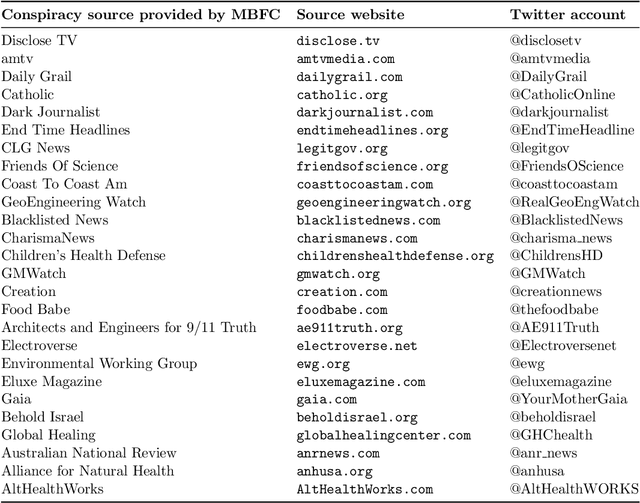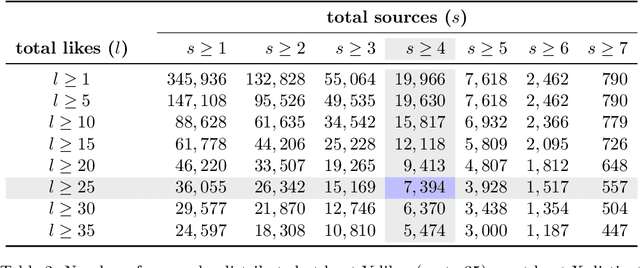The Anatomy of Conspirators: Unveiling Traits using a Comprehensive Twitter Dataset
Paper and Code
Aug 29, 2023



The discourse around conspiracy theories is currently thriving amidst the rampant misinformation prevalent in online environments. Research in this field has been focused on detecting conspiracy theories on social media, often relying on limited datasets. In this study, we present a novel methodology for constructing a Twitter dataset that encompasses accounts engaged in conspiracy-related activities throughout the year 2022. Our approach centers on data collection that is independent of specific conspiracy theories and information operations. Additionally, our dataset includes a control group comprising randomly selected users who can be fairly compared to the individuals involved in conspiracy activities. This comprehensive collection effort yielded a total of 15K accounts and 37M tweets extracted from their timelines. We conduct a comparative analysis of the two groups across three dimensions: topics, profiles, and behavioral characteristics. The results indicate that conspiracy and control users exhibit similarity in terms of their profile metadata characteristics. However, they diverge significantly in terms of behavior and activity, particularly regarding the discussed topics, the terminology used, and their stance on trending subjects. Interestingly, there is no significant disparity in the presence of bot users between the two groups, suggesting that conspiracy and automation are orthogonal concepts. Finally, we develop a classifier to identify conspiracy users using 93 features, some of which are commonly employed in literature for troll identification. The results demonstrate a high accuracy level (with an average F1 score of 0.98%), enabling us to uncover the most discriminative features associated with conspiracy-related accounts.
 Add to Chrome
Add to Chrome Add to Firefox
Add to Firefox Add to Edge
Add to Edge